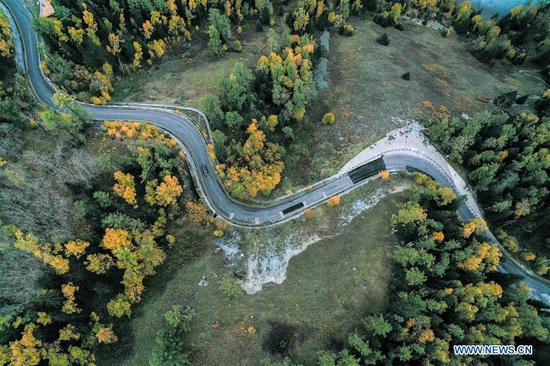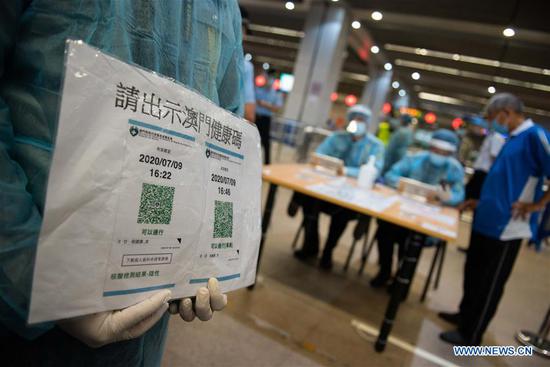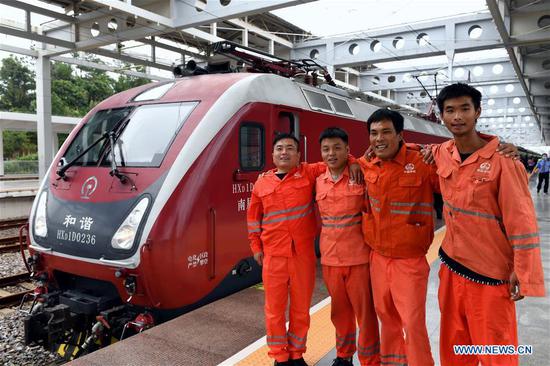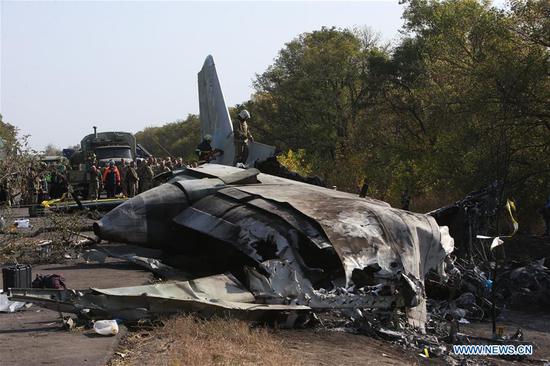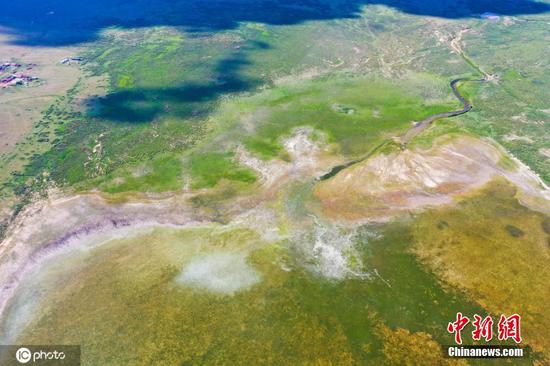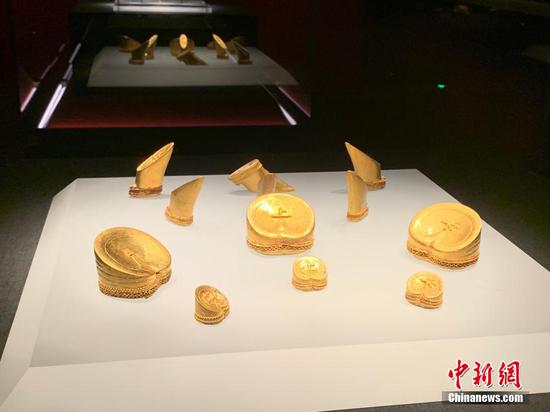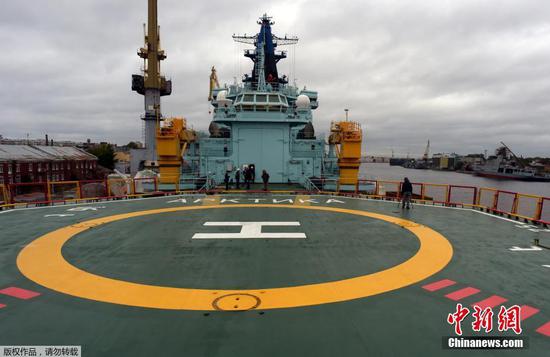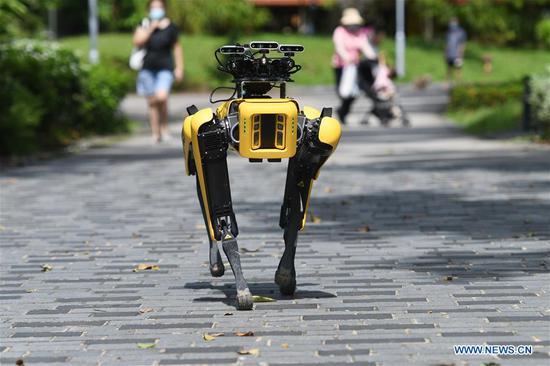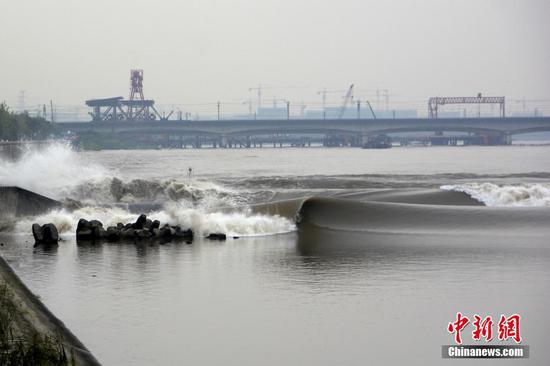
Photo taken on May 26, 2020 shows an unmanned tractor equipped with BeiDou Navigation Satellite System (BDS) sowing seeds in the field in Anzhong Village of Xiaoyangying Town in Dengzhou City, central China's Henan Province. (Xinhua/Feng Dapeng)
Despite being affected by three typhoons and the COVID-19 epidemic, Song Jilin's 20 hectares of rice on the Qixing farm, northeast China's Heilongjiang Province, embraced a bumper harvest this year.
There was a lack of hands during the spring plowing season because of the epidemic, but the unmanned rice transplanters equipped with China's BeiDou Navigation Satellite System (BDS) helped out, Song said.
On the Qixing farm, a combine harvester guided by the BDS is shuttling between the rice fields. Zhang Jinghui, another major rice planter, said with advanced navigation technology, the harvester can work precisely with an error range of less than 2 cm. It can also work during the night to increase efficiency.
The application in precision agriculture is an example of how BDS has become a powerful impetus to boosting China's economic and social development and improving people's living conditions.
Extensively applied in various aspects of the national economy and people's lives, BDS currently provides full-scale services in sectors ranging from transportation, public security, disaster relief, and mitigation to agriculture, forestry, and city management.
When China was building the two makeshift hospitals of Huoshenshan and Leishenshan in Wuhan, once the epicenter of the COVID-19 epidemic in the country, equipment based on BDS provided high-precision positioning services and accelerated the construction.
BDS has played an indispensable part in helping fishermen cut losses and evade the strong winds and waves during typhoon season in Fujian Province.
BDS was used for high-precision railway construction and management. BDS-based modules were installed on the trains traveling along the Qinghai-Tibet Railway to track accurate three-dimensional coordinates and running speed. Based on this information, the control center can optimize route planning, shorten train departure intervals and improve train operation efficiency and safety.
During the construction of the Beijing-Xiong'an intercity railway, a key project for the coordinated development of the Beijing-Tianjin-Hebei region, BDS has been applied to guide the track-laying work to make the railway safer and more comfortable.
The BDS's distinctive short message function has facilitated the power data collection in remote areas with no communication signal coverage. In 2008, when a magnitude-8 earthquake struck Wenchuan in southwest China's Sichuan Province, severely damaging ground communication facilities, rescuers used the short message function of BDS to report the locations of the quake-hit areas.
Over the past 10 years, the total output value of China's satellite navigation and location service industry has increased by more than 20 percent annually. The output value reached 345 billion yuan (about 49.5 billion U.S. dollars) in 2019 and was expected to exceed 400 billion yuan in 2020.
The integration of BDS with emerging technologies, including 5G, mobile communications, and big data will be further promoted to create new business models and growth points, said BDS Spokesperson Ran Chengqi.
BDS not only belongs to China but to the whole world. By the end of 2019, China had exported its BDS-based products to more than 120 countries and regions. BDS has entered a new era of global service, benefiting precision farming, digital development, and smart port construction in ASEAN, South Asia, Eastern Europe, West Asia, and Africa.
The application of BDS has no boundaries, and more efforts will be made to develop new satellite navigation technologies to provide better navigation, positioning, and timing services for humankind, said Xie Jun, chief designer of the BDS-3 satellite system.









